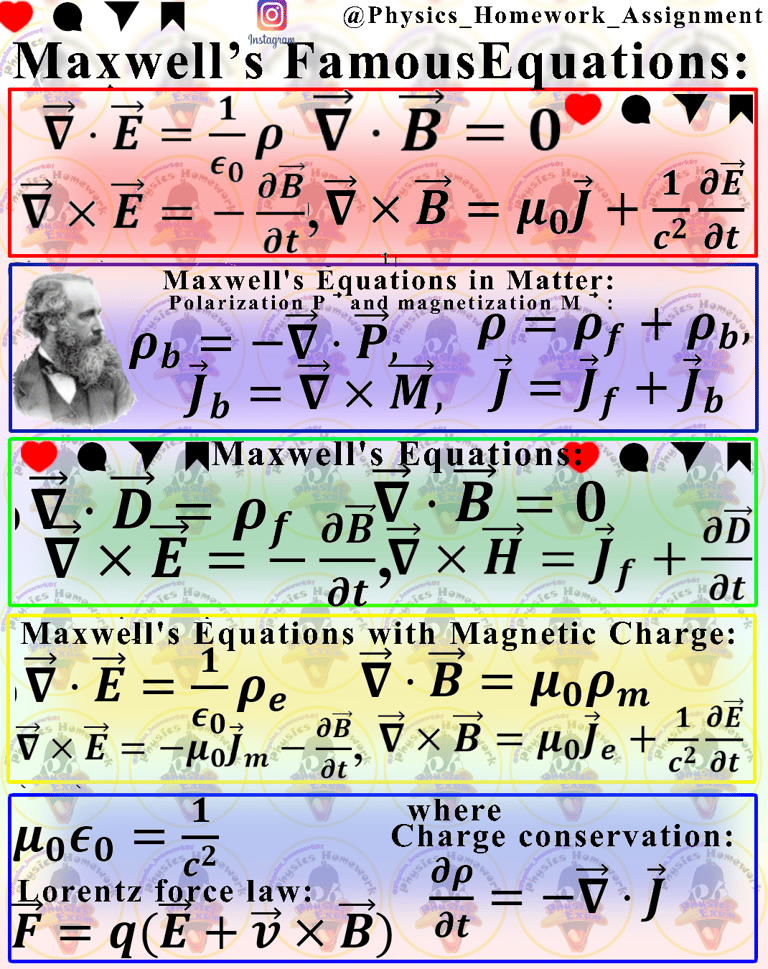Electromagnetism
Blog post description.
3/19/20251 min read


Maxwell's equations describe the fundamental principles of electromagnetism, explaining how electric and magnetic fields interact. The first equation states that electric charges produce electric fields, meaning that any charged object creates an invisible force field around it. This principle is key to understanding static electricity and how charges influence their surroundings. The second equation explains that there are no magnetic charges; instead, magnetic fields always form continuous loops, which is why magnets always have both a north and a south pole.
The third equation describes how changing magnetic fields create electric fields. This principle is the foundation of electromagnetic induction, which enables technologies like electric generators and transformers. When a magnetic field varies over time, it generates an electric field that can drive a current in a conductor. The fourth equation states that electric currents and changing electric fields create magnetic fields. This explains how electromagnets work and how radio waves and light propagate as self-sustaining electromagnetic waves.
Together, these four principles form the foundation of classical electromagnetism, explaining a wide range of natural and technological phenomena. They help describe how light travels, how electrical circuits function, and how electromagnetic waves transmit information in modern communication systems. Maxwell’s work unified electricity, magnetism, and optics, showing that light itself is an electromagnetic wave. These ideas continue to be fundamental in physics, engineering, and modern technology, influencing everything from wireless communication to medical imaging systems.
Solutions
Expert assistance for your physics lab assignments.
Support
Help
© 2025. All rights reserved.
